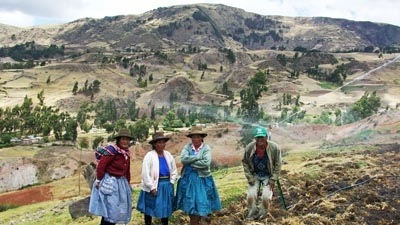In the Peruvian highlands, women do much of the same agricultural work as men, in addition to caring for their children and homes. But their work is not sufficiently valued. The lack of recognition of women’s role in Peruvian rural life has led to their under-representation in the management of water users’ organizations (WUOs). Their voices and interests are not sufficiently taken into account in decision-making.
Nevertheless, the role of rural women in the value chain of a highland family can and should be fully recognized: the promotion and recognition of women’s participation in agriculture and their access to leadership positions in sectors and communities can help improve their household income as well as increase inclusion and equality in a society that is struggling to overcome poverty.
These are some of the observations of the 2007-2009 World Bank study entitled “Empowering women in irrigation management: the Sierra in Peru". The study was conducted in WUOs in Chonta, Cajamarca in the northern Andes and Arequipa in southern Peru. Water is a vital resource in the country’s highlands given that the lack of infrastructure makes it necessary for inhabitants to administer and use these resources in a sustainable manner.
The first impression, because it is the most evident, is the difference in the value placed on the roles of men and women, which reflects the traditional patriarchal culture of rural Peru.
Work by men that requires physical strength is more highly valued than work by women, whose role is of “mothers and wives,” despite their contributions to cattle-raising, milking and even planting and harvesting crops, as well as the more physically-taxing work associated with irrigation, such as cleaning canals, since many communities lack manpower given that men often leave the communities to work in urban areas or mines.
In addition, the OECD (2010) found that women own less than 25 percent of the land in Peru. “The proportion was increasing, but remained limited due to several constraints, such as the higher rate of illiteracy among women, or the fact that women who were not married but in consensual unions had no right to own the land of the household,” according to the study report.

